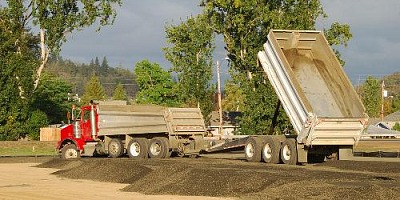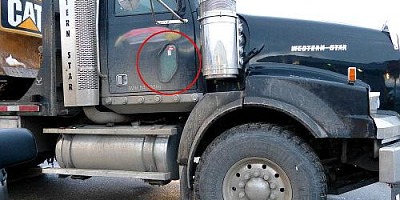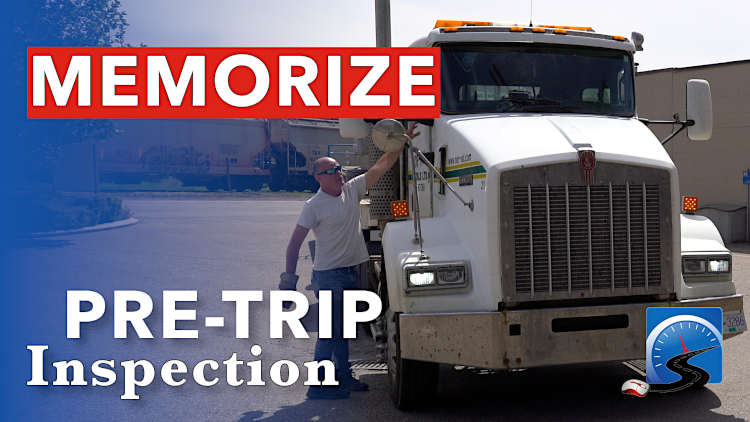
Strategies and techniques to memorize the CDL Pre-Trip Inspection
5 Tips to Memorize the CDL Pre Trip Inspection
Closed Caption
- Class A pre-trip inspection.
Oh my God, there is so much information.
How am I going to remember all of this information to pass my CDL license and get trucking?
These tips, these five tips for memorizing information will work for any subject that you're going to learn.
But today, we're going to work on the class one pre-trip inspection.
Get Rid of All the Crap!!
Tip number one, get rid of all of the crap you just don't need!
Bruce Lee said that learning is not about adding more stuff.
It's getting rid of the stuff that you don't need.
If you're in Raleigh, North Carolina, it doesn't matter if the test is harder in El Paso, Texas.
 Learning isn't about adding, but rather getting rid of that which you don't need - Bruce Lee
Learning isn't about adding, but rather getting rid of that which you don't need - Bruce Lee
It just doesn't matter.
You got to get all of that extraneous crap out of your head and move forward with the pre-trip inspection.
Break the Exercise Down Into Systems, Sequences & Patterns
Second tip, break it down into categories.
Stick with the sequence of the truck.
The best path of travel around the truck is:
• Under the hood;
• In the cab;
• Around the truck counterclockwise;
• Under the truck;
• and back in the truck to finish up your pre-trip inspection.
Stick with the sequences.
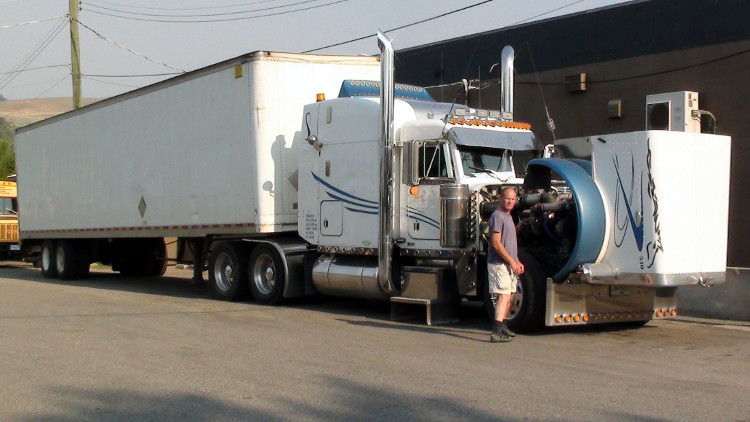 Follow the same sequence every time you do the CDL pre-trip inspection.
Follow the same sequence every time you do the CDL pre-trip inspection.
Break it down into sections.
Start at the top, left to right, to the bottom.
And if you can do that, stick to the sequence, stick to the patterns, that is going to help you to memorize the information that you need.
Think of your passcode for your phone.
Four digit passcode.
We don't remember the number, but we remember the pattern.
Think of it in terms of patterns, because when you get into the cab, it's going to be a little tougher, because it doesn't lend itself to an easy pattern, and most of it's going to be memorization.
Record Yourself & Write it Down on Flash Cards
Tip number three, record yourself, write the stuff down on flashcards.
That will help you to memorize, because the act of writing stuff down helps us to get it into our head and to memorize.
That's why people who take notes generally sit at the front of the class and get the top marks.
So write it down, flashcards, get your spouse, your other half, your kids, somebody else, to come out and record you doing the pre-trip inspection.
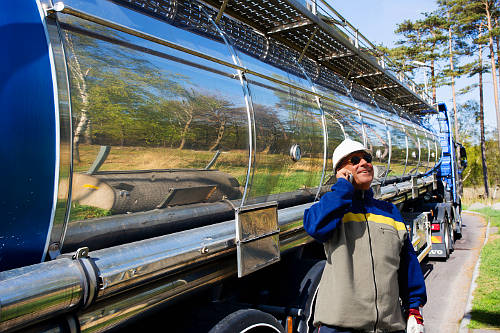 Write out the details of the CDL pre-trip inspection on flash cards and carry these around with you to test yourself.
Write out the details of the CDL pre-trip inspection on flash cards and carry these around with you to test yourself.
And that way, you have a tool that you can go back, you can visualize it.
You can see the steps involved in getting the information into your head.
Teach it to somebody else.
Teach it to your kids, teach it to your spouse, teach it to anybody who will watch you learn how to do the pre-trip inspection and teach somebody else, because to teach is to learn.
And you'll get the details into your head.
Memory Tools That Will Help You Retain Information
Tip number four, acrostics, acronyms, and other learning mnemonics.
My Very Excellent Mother Just Served Us Nachos.
• Mars
• Venus
• Earth
• Mercury
• Jupitor
• Saturn
• Uranus (Don't Forget Uranus)
• Neptune
That's the way you remember the planets.
And it's a tip that you can use for learning any information.
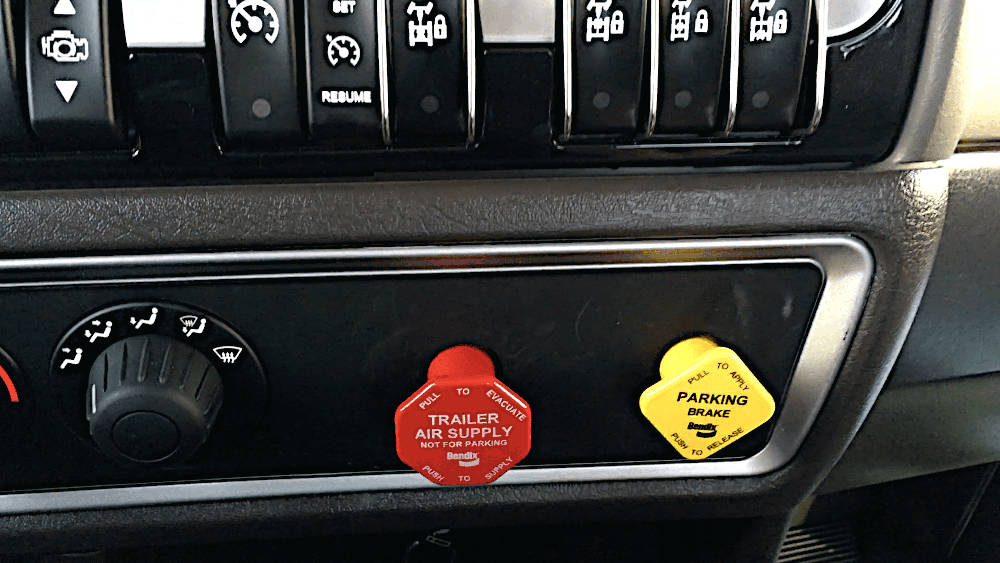 Use funny sentences, songs and dirty rhymes to remember information.
Use funny sentences, songs and dirty rhymes to remember information.
The in-cab air brake test, for example.
Grandma Likes Everyone Because Grandma's Lovable.
This is the air brake test that you have to do in-cab.
• Governor low setting (returns compressor to load phase before 80psi);
• Low air warning (activates above 60psi);
• Emergency brakes apply (applies between 20-45psi);
• Build-up Test (Compressor builds 50 to 90psi within three minutes for most states and provinces.)
• Governor Maximum (puts compressor is unload before 135psi);
• Leak test (can't lose more than 4psi in 1minute for tractor-trailer).
 Associate new information with that which you already know. The Trailer Air Supply is a an on/off switch like a light switch, for example.
Associate new information with that which you already know. The Trailer Air Supply is a an on/off switch like a light switch, for example.
THE FIVE "Fs"
This is another mnemonic that you can use.
The emergency equipment.
1) First aid;
2) Fire extinguisher;
3) Flares;
4) Fluids, and;
5) Flashlight.
 Acronyms help us to remember a lot of the new information that we need to remember when learning to driving a big truck.
Acronyms help us to remember a lot of the new information that we need to remember when learning to driving a big truck.
And as well, for coupling and uncoupling, LAP, PDA.
Okay, so uncoupling is LAP:
1) Landing gear;
2) Air lines;
3) Pin.
And then PDA, public displays of affection.
1) Pin;
2) Dollies;
3) Airlines.
These are all mnemonics, and things that you can use to get the details into your head when you're learning the pre-trip inspection.
 Always start with the very basic components of any new topic, and add more and more detail as you learn more.
Always start with the very basic components of any new topic, and add more and more detail as you learn more.
Associate the Information With Something You Already Know
Tip number five, associate the information with something you already know.
The air brakes, for example.
They're going to look a bit complicated when you first get into a big truck, but they're the same as what you have in your car.
You have a brake pedal--the service brakes--you have parking brakes for the trailer and the truck.
You have parking brakes and emergency brakes in your car as well.
One and the same.
The only difference is in your car is they're manual, in a big truck, they're automatic.
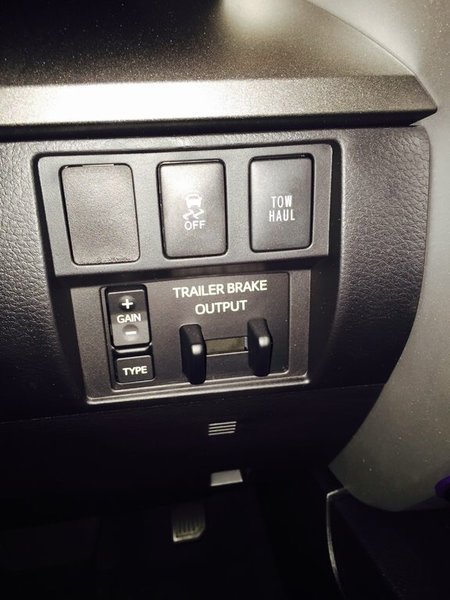 Most pickup trucks have a controller for the trailer brakes; so too does a semi-trailer. The spike or hand valve controls the semi-trailer's brakes.
Most pickup trucks have a controller for the trailer brakes; so too does a semi-trailer. The spike or hand valve controls the semi-trailer's brakes.
Think of a pickup truck that has a trailer that has electric brakes on it.
You've got a brake controller in the pickup truck.
In a big truck, you have a spike or hand valve that controls the trailer's service brakes.
The information is similar, and that's what you need to do.
When you're memorizing stuff, try and associate it with information that you already know.
If you can do that, you're going to be able to take on more.
In keeping with that, start big and then go down into the details.
For example, the tires.
There's 10 tires on a tandem tandem tractor trailer.
Every tire's the same.
 The CDL pre-trip inspection is open book. Associate parts together. The license, for example, can be associated with the DOT stickers.
The CDL pre-trip inspection is open book. Associate parts together. The license, for example, can be associated with the DOT stickers.
All the suspension components are the same at each wheel.
There's only airbags, shock absorbers, and leaf springs under there.
You can't get any more suspension components.
So know that, and that's going to simplify it after you've done it once or twice, because the first time you do it, you're thinking, oh my God, there's 10 wheels.
How am I going to know all of these?
Each wheel is more or less the same.
The suspension components are the same.
Start Big and then Go Into the Details of the Topic
So break it down into the big, and then go to the detail and put the information into terms, into your own words, and try and familiarize it with things that you already know.
All of that will help you with the pre-trip inspection.
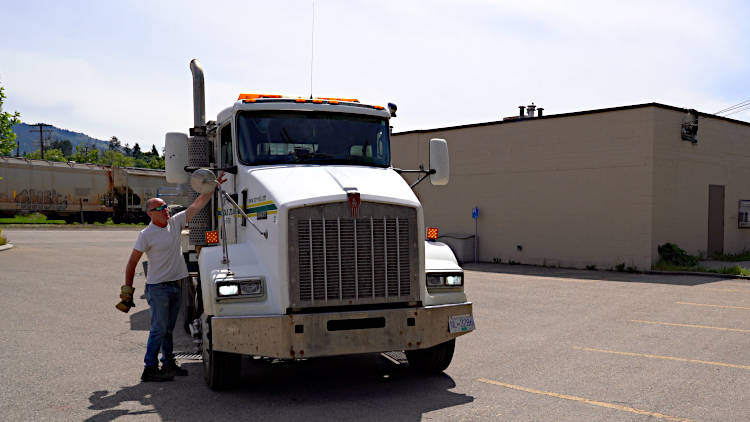 Start with the big components and the basic skills and abilities and then add the details and you learn more.
Start with the big components and the basic skills and abilities and then add the details and you learn more.
For the complete detailed list and wording of what you need to do for the Class A pre-trip inspection and be successful, click down here.
And for the video of the complete pre-trip inspection, click here.
And remember, pick the best answer, not necessarily the right answer.
Have a great day.
Bye now.




